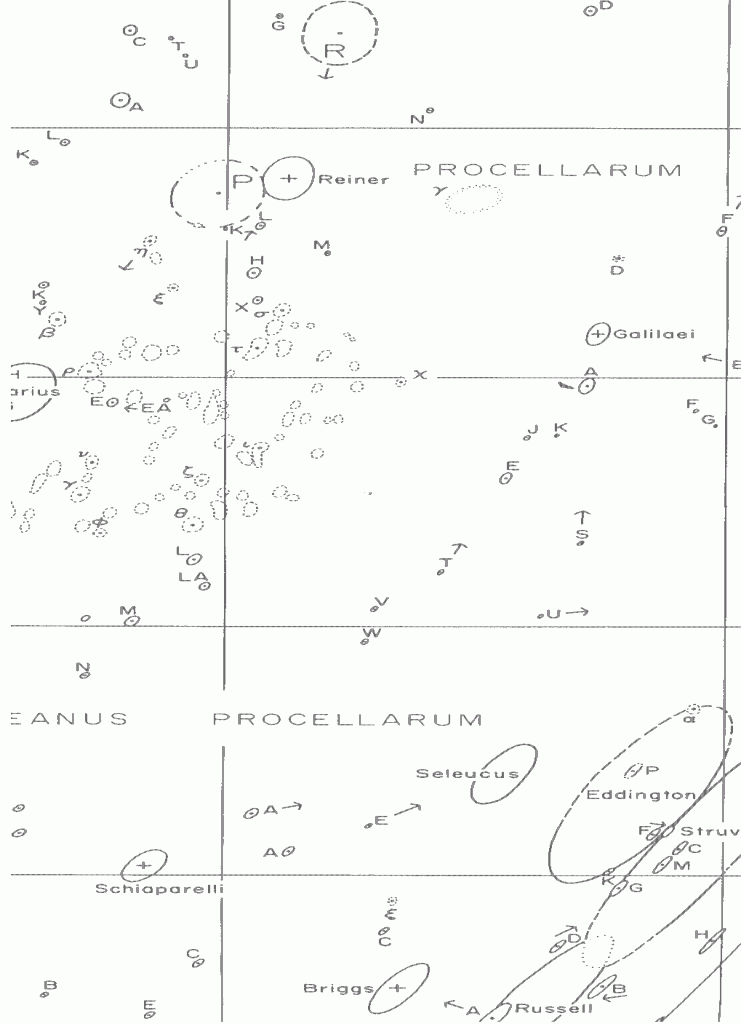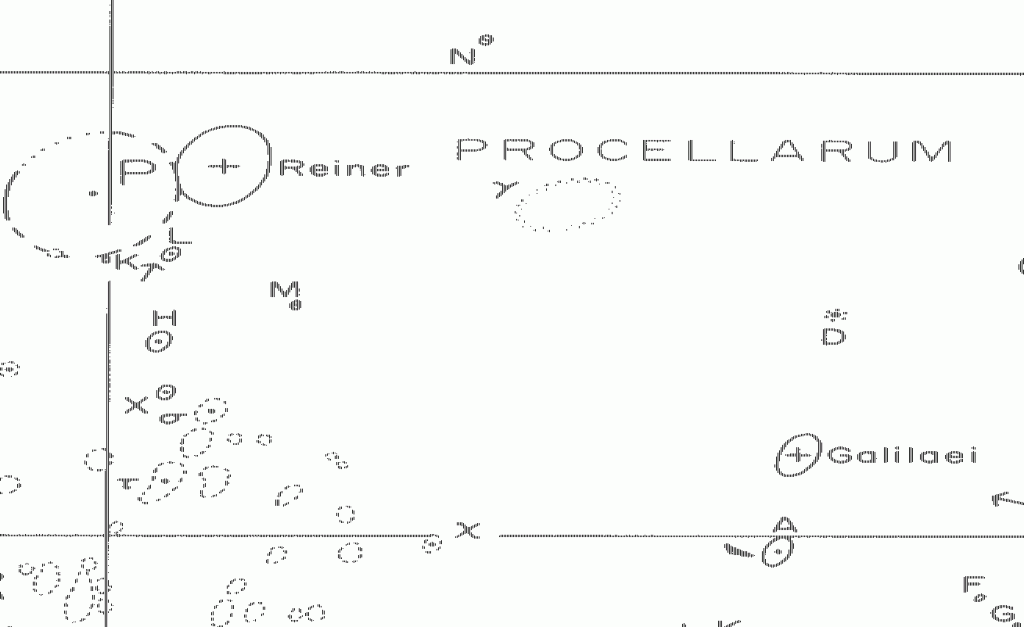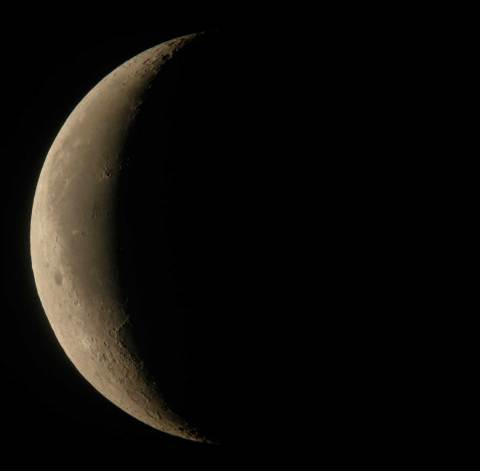On the morning of the equinox, as I was fruitlessly attempting to capture an image of Mars near the waning crescent moon, I did manage to create a small mystery for myself with the digiscoped image of that crescent moon:
This is Day 25 of the lunar cycle, which means there are only 4 days until new moon, so there isn’t a whole heck of a lot to look at in this picture. From top to bottom, the most prominent features are the sunlit craters Pythagoras and Babbage (the latter has sunken walls and a prominent crater overlying it to the 4 o’clock position), then the vast expanse of the northern Oceanus Procellarum, broken by the crater pair Herodotus and Aristarchus, with the fine wrinkled area called Vallis Schröteri between/above them.
From there we continue south to the lonely Marius (lovely plurivocal name that; if you’ve not seen the Pagnol film, you really ought to, sometime, if you like old French movies), with an equally lonely Reiner to his lower left (SW). Reiner is situated near an interesting albedo feature (bright area) called Reiner Gamma, about which the moon master Chuck Wood has some interesting commentary. (In fact, after starting my research for this post, I noticed that the aforelinked LPOD photo mentions the very mystery feature I was looking up, so click the darn link!)
At the bottom of the vast Oceanus Procellarum is the prominent crater Mersenius, which has a line of what look like mountains leading toward it from the northeast. These “mountains” are unnamed but appear to be part of the wall that surrounds the Mare Humorum, which is in shadow to the east (right).
But what attracted my attention in this snapshot was how bright the left-hand side is. It’s pretty hard to overexpose one part of the moon so much, while leaving the rest of it in relatively decent tonal values. When I zoomed in (click the photo; it’s much better at larger sizes), I discovered that this overexposed region was a result of the bright ray system emanating from the western limb of the moon.
I’d never noticed it before, and the feature responsible isn’t really mentioned in the 1996 edition of the lunar observer’s bible (Rükl’s atlas), although it does appear in that book under the unassuming name Olbers A. Here is the portion of the Lunar and Planetary Laboratory’s Quadrant map of the moon (1964) where the feature appears at far right (click the map for the full-size image, since the blog software helpfully “centers” the picture):

It’s a bit hard to see what I’m talking about from that shot, so here’s a close-up of that close-up (again, click the image):

The IAU, apparently in recognition of the prominent ray system visible under day 25–like illumination, decided in 1993 to give the crater a name of its own, rather than have it be “the closest crater to the already-named Olbers.” The name they came up with was Glushko.
Rükl’s atlas from 1996 must have been prepared without updating to current nomenclature, because despite the fact that this name change dates back to 1993, this 1996 edition (published in 1990 in the author’s native Czech Republic) continued to call it Olbers A. I’m happy to report that the 2004 edition of the Atlas updates the name with the current IAU designation, Glushko.
This crater is rather small (43 km diameter), but it has a prominent sharp rim. You can see just how sharp, and how interesting this crater appears, in this radar image, taken with radar from the famous Arecibo dish in Puerto Rico, with accompanying commentary by Chuck Wood. The melt texture to the north of the crater in that linked photo is really interesting; it shows how dynamic the process of creating the moon’s impact craters really was!


